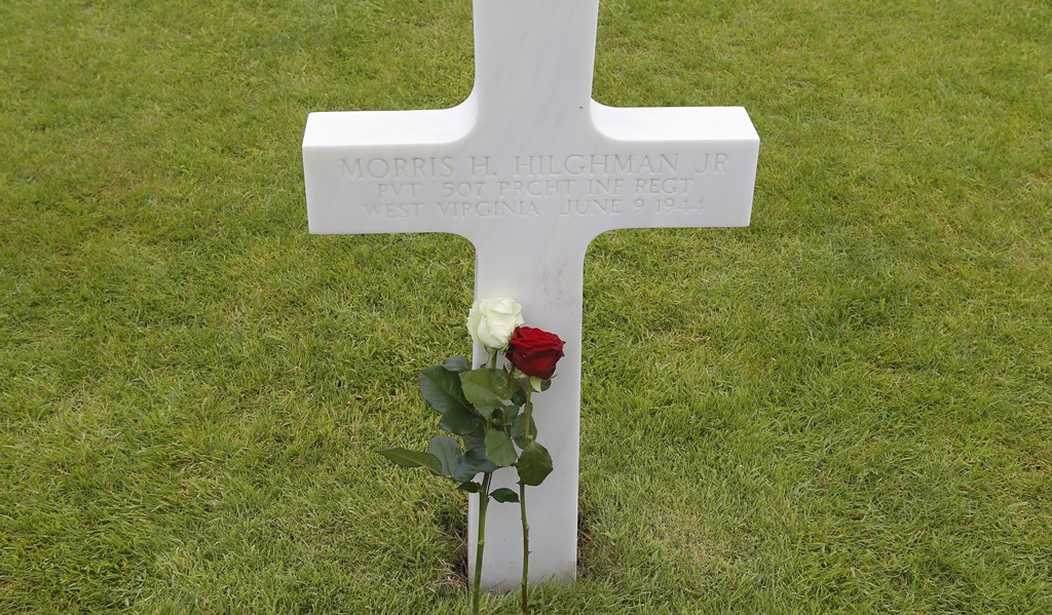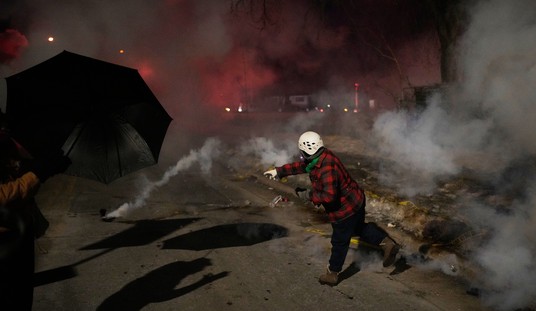In the years preceding 2018, to honor the centennial of the end of WWI, England’s Imperial War Museum allowed director Peter Jackson to rifle through their voluminous film archives. Using cutting-edge restoration technology, he produced They Shall Not Grow Old, a moving documentary of what it was like for the young British soldiers in the trenches of the Great War.
But it wasn’t the first time the Imperial War Museum worked with a director to produce a film using their archives. In 1975, American director Stuart Cooper, then 33 and living in England, released Overlord. It’s a melancholy, impressionistic drama that audaciously intercuts between WWII-era stock footage and actors in footage shot for Overlord by Stanley Kubrick’s brilliant cinematographer, John Alcott. Alcott used rebuilt German Goetz and Schneider camera lenses from the 1930s and the correct black-and-white film stock to best match the documentary footage from the 1940s. It also helped enormously that the Imperial War Museum allowed Cooper’s technicians access to first-generation negatives whenever possible to greatly reduce or eliminate the scratchiness that’s so often associated with WWII documentary footage.
With an American director shooting in 1975 as the Vietnam War raged on, there’s a cynicism to Overlord that marks it of its time. The death of its lead character, Thomas Beddows (played by Brian Stirner), is foretold early in the film. But there’s a surprising gentleness to Overlord as well. On its Criterion Collection’s optional commentary track, Stirner comments, “You do need to be in a certain place, I think, to watch the film; it’s a kind of meditation on war. And in that sense, I don’t know any other war film like it. I mean the only other thing I can think of, is the very old film, All Quiet on the Western Front.”
As Overlord’s title implies, a squad of British soldiers is being trained in anticipation of D-Day, but this film isn’t the second coming of The Longest Day or Saving Private Ryan. As Cooper asks on the disc’s director’s commentary, “Can you make a war film without an action scene? Yes, you can. However the Hollywood idea of a war film [is that] it is an action scene; it’s all about action. Not that that’s necessarily wrong, because there are war stories that require that, but there seems to be a kind of common denominator that happens with Hollywood films that deal with war.”
The film begins with the unusual title card, “The Imperial War Museum Presents,” followed by many seconds of black screen as the sound of marching soldiers fades in. We see German newsreel footage of their early victories in the war in France, and Hitler circling overhead in an aircraft, surveying the destruction in Poland. After this prologue, the title OVERLORD zooms into the screen in white lettering over a black screen.
One-Stop WWII Shopping
The Imperial War Museum’s credit is certainly well deserved. As Cooper explains his director’s commentary, the museum provided access to the UK Ministry of Defence, which provided Cooper and his crew the film sets, in the form of an abandoned WWII barracks in Aldershot, Hampshire. These were used as the barracks to film the movie’s basic training scenes, and were dressed to serve as the film’s sets for scenes set outside the base during the two-week shoot for the new footage with actors. The museum supplied WWII-era uniforms, rifles, bunk beds, and other period equipment, including a landing craft, the last flying Lancaster bomber, and modern-day aircraft to film the inflight shots.
Cooper notes that:
One of the things that was a big help to me is all the young men and women who did all the exhibits of the Imperial War Museum, they became my costume designers, my production designers, my prop masters, and what have you. And most of the props all came from the Imperial War Museum, including Tom’s suitcase. So, it’s like one-stop shopping, but the benefit of that was I had people who were totally experts in the costumes of the period the props of the period every little detail was all properly done to make the picture have a historical resonance that we hadn’t seen before.
The Ministry of Defence provided access to a real 1970s British Marines NCO drill instructor, dressed in a period uniform supplied by the museum, to bark orders to both the film’s actors and extras played by real-life British Marine recruits, also dressed in period uniforms, in the boot camp sequence.
Writing in the Criterion Collection’s accompanying 30-page booklet, Kent Jones, former director of the New York Film Festival, claims:
On the face of it, Overlord appears to be as fully grounded in “antiwar” rhetoric as, say, the earlier M*A*S*H (1970) or the later Full Metal Jacket from 1987 (whose basic training sequence bears a very strong similarity to one in Cooper’s film).
I’m not sure how much I buy that. While Cooper has said that Kubrick screened Overlord and met with him, telling him that, “You know, Stu, I’ve got one problem with the film. The only thing wrong with Overlord is it’s an hour and a half too short.” I think that’s far too strong a claim. Full Metal Jacket’s first third was likely far more influenced by earlier American Marines’ basic training-themed films such as Jack Webb’s The D.I. from 1957 and 1970s countercultural Tribes starring Jan-Michael Vincent and Darren McGavin.
Slip-Cutting Away
But it’s during Overlord’s basic training sequences where the new footage and stock footage really begin to mesh. Cooper describes a process he called “slip-cutting” to synchronize the pace of the editing of the new footage to the tempo of the stock footage, to help blend old and new. Cooper notes that he could not write Tom’s story without first knowing what stock footage he’d be using from the Imperial War Museum. He also relied on the diaries of British soldiers in the museum’s archives to inform his script.
Speaking of which, in 2008, Cooper told the Guardian (an anecdote he also relates on the director’s commentary):
Before starting research, I was introduced to the museum’s very patient keeper of film, Anne Fleming, who politely asked me: “What portion of the archive would you like to view?” Knowing little about it, I remember saying: “As I am here, I might as well look at the entire collection.” “Fine,” responded Fleming, “will you come Monday through Friday?” “Yes,” I responded. “Very good, Mr Cooper, if you view Monday through Friday, nine to four daily, you might get through the collection in about nine years.”
Because of the nature of using stock footage and footage of actors, Overlord isn’t a perfect film, but it’s a minor miracle that it was made at all. The juxtaposition of scale between the small number of actors Cooper and Alcott filmed and the documentary footage of the Allies’ preparations for D-Day at times feels jarring. But as Cooper says on the director’s commentary, he wanted to illustrate the soldiers’ shrinking scale amidst the massive buildup in machinery needed to begin the liberation of Europe.
After its initial release at the Berlin Film Festival in 1975, where it won the Silver Bear award and showings in Europe, Overlord was unable to find a distributor in America. The film was largely forgotten until it was discovered by Jerry Harvey, the impresario who programmed the Los Angeles-area Z Channel on cable TV, and who loved the film and aired Overlord in the early 1980s, flying Cooper into Los Angeles for a press conference, which jumpstarted his American career.
Overlord Rediscovered
Overlord was then largely forgotten once again until Xan Cassavetes’ 2004 documentary, Z Channel: A Magnificent Obsession. In 2014, it was restored under Cooper’s supervision and released on Blu-ray as part of the Criterion Collection, which, as usual, added a plethora of special features. There is the optional audio commentary track by Stuart Cooper and lead actor Brian Stirner that we excerpted quotes from above, along with the film’s trailer, several short films that either were used in Overlord, influenced the film, or were shot by Cooper, a 2007 interview with the archivists at the Imperial War Museum, and much more.
Seeing the film at the 2004 Telluride Film Festival, Roger Ebert described “The War of Private Beddoes” [sic] and gave the film four stars:
The most remarkable discovery at this year’s Telluride is “Overlord,” an elegiac 1975 film that follows the journey of one young British soldier to the beaches of Normandy. The film, directed by Stuart Cooper, won the Silver Bear at Berlin — but sank quickly from view after a limited release, and was all but forgotten until this Telluride revival.
* * * * * * * *
There are sights I had never seen before, including monstrous mechanical wheels that propel themselves across the beach to explode land mines and flatten barbed wire. One of these machines is driven by a ring of rockets around its rim, and as it rolls forward, belching fire and smoke, it looks like a creature of hell.
* * * * * * * *
[Tom] meets a local girl (Julie Neesam) at a dance, in a club filled with soldiers on leave. All of the cliches of such scenes are abandoned. She is a nice girl, he is a nice boy, they are kind to each other, tender and polite, and agree to meet again on Monday. But on Monday, he is part of the early stages of the invasion, which seems, he writes his parents, like an entity that is growing to unimaginable proportions while he becomes a smaller and smaller speck of it. He has a fantasy in which he meets the girl again; to describe it would reveal too much about this film, which is a rare rediscovery.
Viewed as a conventional film, I’m not sure I’d give Overlord four stars as Ebert did. But as a technical achievement, it certainly comes close. As Cooper notes on his director’s commentary track, when stock footage appears in a conventional film, it can easily take a viewer out of a movie. But the reverse is true in Overlord, as the stock footage makes the film seem much larger, and the newly shot footage allows the stock footage to tell a cohesive story.










Join the conversation as a VIP Member